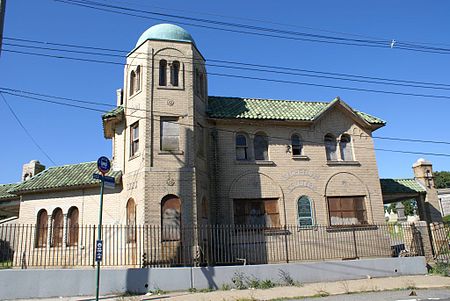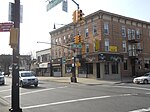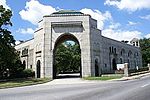Machpelah Cemetery (Queens)
Cemeteries in Queens, New YorkCemetery vandalism and desecrationHarry HoudiniJewish cemeteries in New York CityJews and Judaism in Queens, New York

Machpelah Cemetery is a Jewish cemetery located within the Cemetery Belt in Glendale, Queens, in the U.S. state of New York. It was established around 1855. In addition to managing the 6-acre (2.4 ha) cemetery, the former Machpelah Cemetery Association also managed the adjacent Union Field Cemetery, New Union Field Cemetery and Hungarian Union Field Cemetery. Machpelah Cemetery was abandoned by the late 1980s. The deteriorating entrance building was demolished in 2013.It is accessible by the New York City Subway's J train via the Cypress Hills station and the B13 New York City Bus.
Excerpt from the Wikipedia article Machpelah Cemetery (Queens) (License: CC BY-SA 3.0, Authors, Images).Machpelah Cemetery (Queens)
Cypress Hills Street, New York Queens County
Geographical coordinates (GPS) Address Nearby Places Show on map
Geographical coordinates (GPS)
| Latitude | Longitude |
|---|---|
| N 40.693888888889 ° | E -73.886388888889 ° |
Address
Cypress Hills Street
Cypress Hills Street
11385 New York, Queens County
New York, United States
Open on Google Maps










